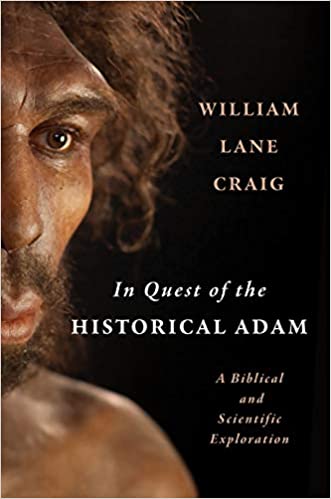Q. For my money, I think it is probable that Gen. 1 is the generic universal account, and Gen. 2 is not just a further unpacking of the human part of Gen. 1, though that’s possible. Let us suppose for a moment that Gen. 2 is the quite specific origin story about where God’s people came from in the ANE (hence the mention of 2 well known ANE rivers). We don’t need to ponder who Cain and Abel married if God had at the same time also created other human beings in his image elsewhere on earth. Both the Gen. 1 and the Gen. 2 stories suggest the unique creation of persons in God’s image, but perhaps you will say this over-presses the narratives. I take seriously the evidence that human origins began in several different places, the ANE, Africa, Australia, Europe and were not all connected to one particular ancestral pair, though that’s not impossible according to Swamidass. For me, we don’t all need an ancestral connection to Adam, because he is our representative head of the human race, and his decisions effect us all. This is not different from the headship of Christ, whose decisions affect all those who are in him. We have no such ancestral connection with Jesus. We are not Jews in most cases. The basic idea called corporate or dyadic personality. And it does not necessarily require personal agency of those who are effected. When Stalin decided to enter the fray against the Nazi, he made a decision as the head of state which effect, and indeed even led to the death of many Russians, quite apart from the individuals’ willing or choosing. Federal headship doesn’t require an ancestral or genetic connection between Stalin and all his people, or Christ and all his people, or Adam and the whole human race. It’s just not necessary. How would you respond?
A. I take it that the universal human progenitorship of Adam and Eve is one of the essential theological emphases of the primaeval history and therefore is not to be sacrificed. Whether it is required for federal headship is irrelevant. In the book I present three reasons for thinking that what is described in Gen 2 is the original creation of man. (1) The purpose of the primaeval narratives of Gen 1-11 is to portray God’s universal plan for and dealings with humankind. Scholars have often asked why the Pentateuch does not begin with the call of Abraham and the founding of Israel in Gen 12. Commentators seem widely agreed that the reason the author prefixes the pre-history to the patriarchal narratives is his universalizing interest. He wants to show that God’s original plan was to bless all mankind and that this aim still remains ultimately in mind through the election of Israel, which is now God’s means of fulfilling His original intent. God was not therefore preoccupied with just the offspring of one specially created human couple to the neglect of everyone else, a sort of pre-Israelite election, but with all (2) A comparison of the story of the creation of man in Gen 2 with other ANE creation stories shows that such stories share an etiological interest in telling of how mankind in general came to exist. For example, in the Atrahasis Epic in response to protests and rebellion of the lesser gods over their burdensome labors, the mother goddess decides to create man to take over the labor for them. Humans were created basically as slave labor for the gods. Such stories seek to answer the question of human origins in general. When read against this backdrop, Genesis 2 is seen to share a similar etiological interest—but with a very different answer! (3) The account in Gen 2 when read at face value is about human origins. Employing the typical form of ancient Mesopotamian etiological myths, “When ____ was not yet, then ____,” Gen 2. 5-7 describes the condition of the earth prior to God’s creation of man:
when no plant of the field was yet in the earth and no herb of the field had yet sprung up—for the Lord God had not caused it to rain upon the earth, and there was no man to till the ground; but a mist [stream] went up from the earth and watered the whole face of the ground—then the Lord God formed man of dust from the ground, and breathed into his nostrils the breath of life; and man became a living being.
The author states explicitly that there was no man to do the work of agriculture, until God created man. Adam is the generic word for man and is not used as a proper name until 4.1. Moreover, woman does not appear until her creation in Gen 2.22. Among all the animals God forms and brings to Adam “there was not found a helper fit for him” (2.20). God therefore creates a woman and presents her to the man. Prior to their creation there simply was no man or woman. The name later given by the man to his wife, said to mean “the mother of all living” (Gen 3.20), is prima facie an affirmation of her (and the man’s) universal progenitorship of all mankind. For these reasons the story of man’s creation in Gen 2 is not intended by the Pentateuchal author as a sequential account distinct from and later than the creation of mankind in Gen 1.26-7, but rather as a focused version of it.
As for scientific evidence concerning human origins, today polygenesis is rejected in favor of the monogenesis of the human race. We do all have a single origin (not necessarily from one couple but from one local population). Homo heidelbergensis was a truly cosmopolitan species that could have originated in either Africa, the Middle East, Europe, or Asia and then migrated to the other continents.













